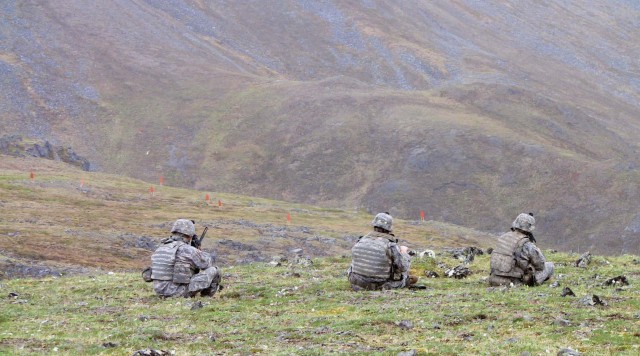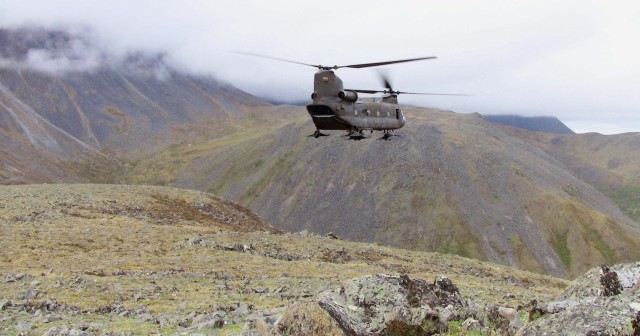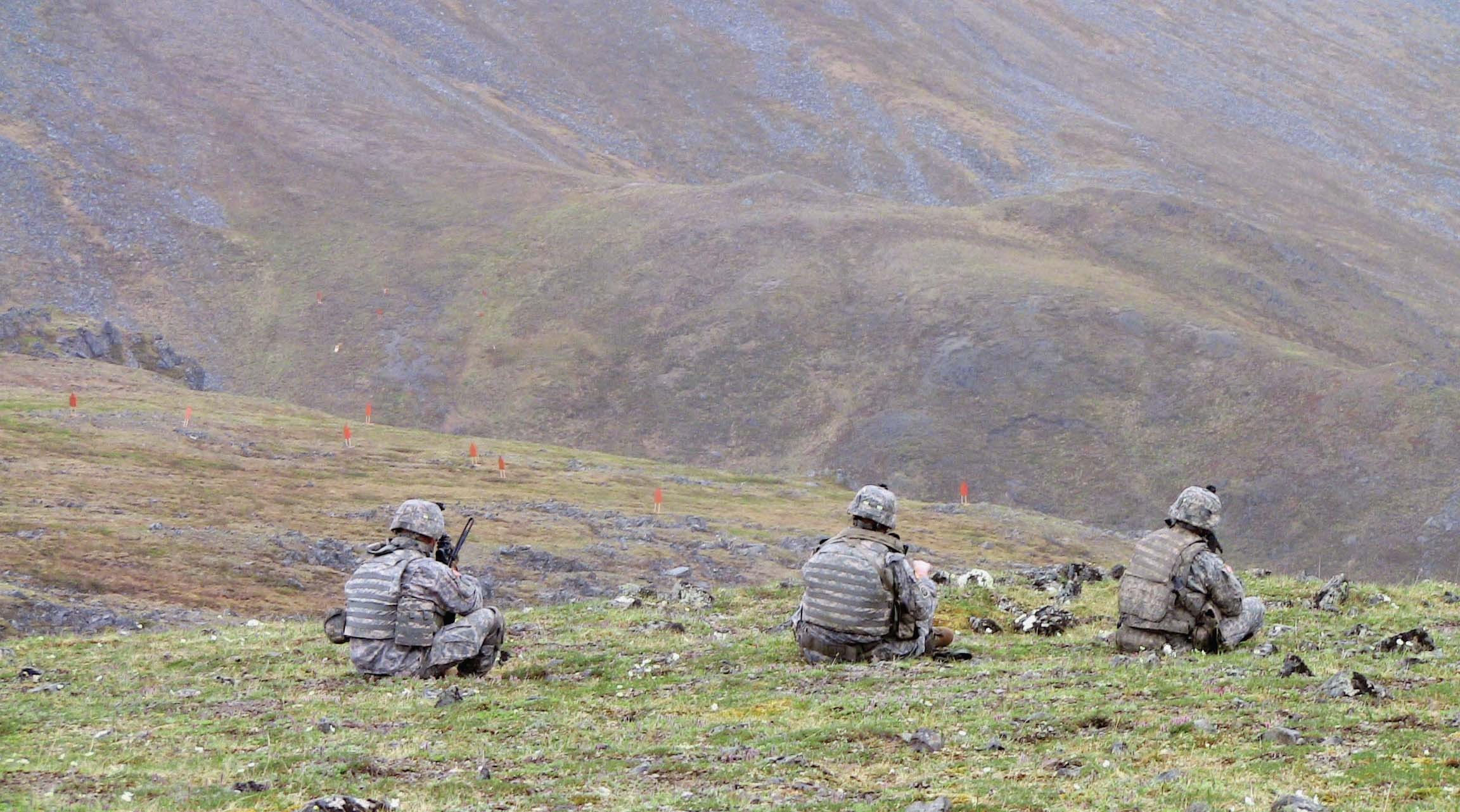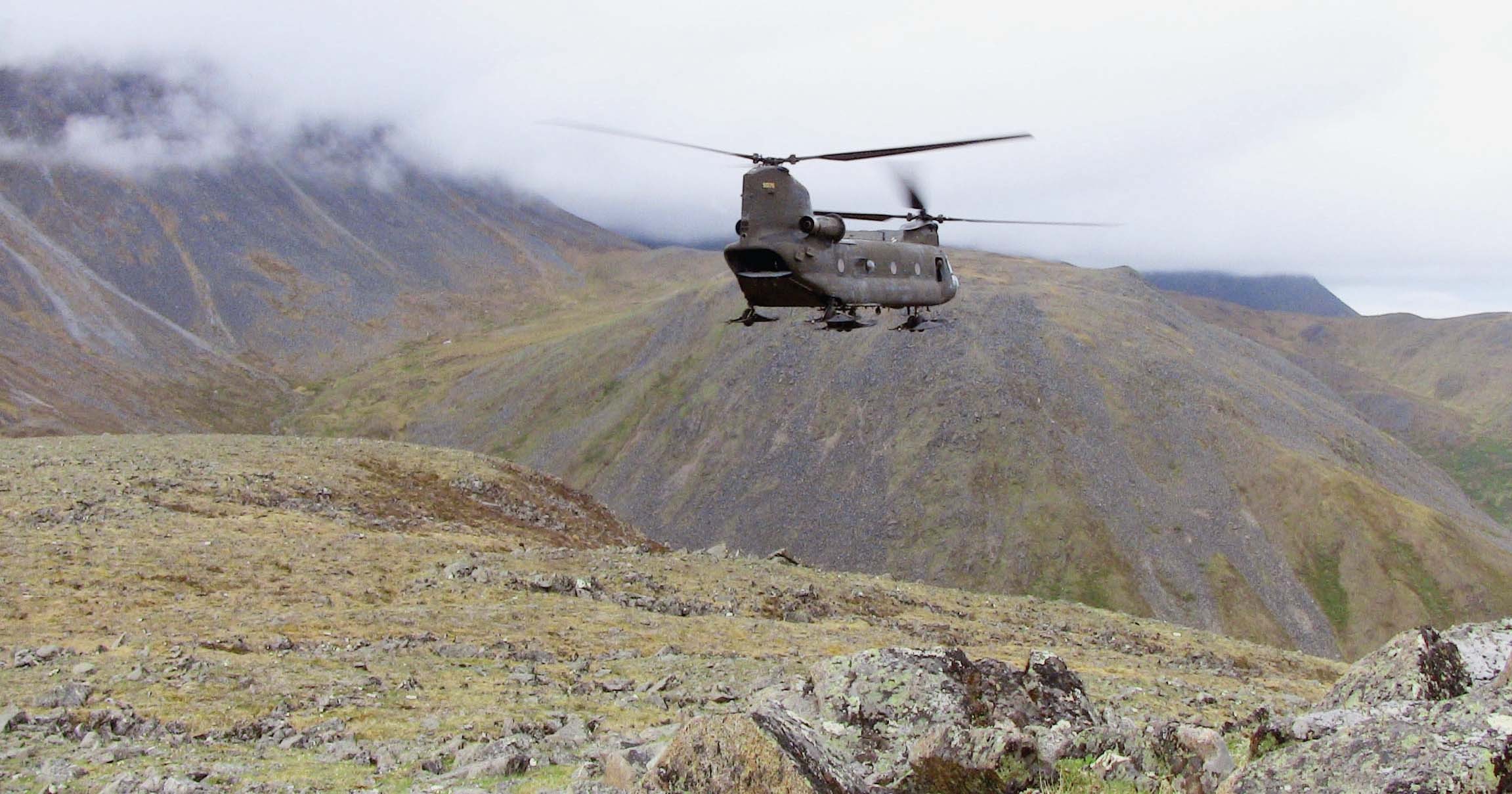FORT WAINWRIGHT, Alaska - Stryker brigade Soldiers recently took on the mountains of the Alaska Range to conduct more challenging and complex training.
The search for terrain mirroring that found in potential overseas areas of operation landed the 1st Battalion, 5th Infantry Regiment "Bobcats" of the 1st Stryker Brigade Combat Team, 25th Infantry Division on Molybdenum Ridge, located roughly 80 miles southeast of Fairbanks.
Battalion Commander Lt. Col. Brian Payne's objective for the Arctic Bobcats during the training mission was "to develop the planning skills of our staff and give every leader, team leader and above a concrete understanding of how greatly mountainous terrain affects operations."
The battalion intelligence section set the stage for weeks of planning by portraying a likely enemy presence on the ridge. They analyzed the terrain and concluded that the most effective way to approach the ridge would be by air. With that in mind, the staff developed its course of action, planned for offensive operations once on the ground and worked closely with pilots from the 16th Combat Aviation Brigade to plan an air-assault operation on Molybdenum Ridge.
The 1-5 Infantry staff, the 1-52nd Aviation staff and crews from B Company "Sugarbears" joined forces to create the detailed plan that would rapidly and safely deposit more than 130 Bobcat leaders onto Molybdenum Ridge.
Their preparations culminated with a combined-arms rehearsal using a terrain model half the size of a basketball court. Leaders painstakingly walked through each phase of the operation as a team, conducting movements and radio calls as if the actual mission were taking place.
The rehearsal began to paint the picture of the challenges that lay ahead. However, once the Bobcats set foot on the ridge, reality surrounded them. Sgt. Robert Geer of 2nd Platoon, A Company said "the area we landed in was difficult. Seeing the mountains we had to climb took a lot of leaders by surprise - it was also one of the most amazing views I have seen in Alaska."
After the Bobcat leadership landed, they maneuvered over the terrain toward different firing points. Staff Sgt. Patrick Smith of C Company said "the terrain was an eye-opener," and the leadership gained a clearer picture of where the unit's physical fitness must be to fight and win in the mountains.
Once complete with their movements, the individual companies began to conduct planned live-fire events on terrain that supported firing in every direction. They employed rifles, machine guns and mortars at medium and long ranges.
M240B machine gunners and assistant gunners worked to suppress targets as far as 1,300 meters away and snipers and squad-designated marksman engaged targets out to and exceeding the maximum effective range of their weapon systems. Soldiers trained on firing techniques that incorporated changes in elevation and range appropriate for operations in mountainous terrain.
While not engaging targets with their personal weapons, leaders were able to call for indirect-fire support from the battalion's mortar platoon which had established a firing point on a mountainside a mile to their south. All Soldiers carried mortar rounds in their rucksacks and filed by the mortar point to hand off their ammo prior to moving further up to their firing positions. Geer and his squad leader, Staff Sgt. Joseph Kitchens, both demonstrated the ability to adjust mortar fire right onto their target, a man-sized iron silhouette 1200 meters away.
"We got a great taste of what it is going to be like," said 1st Lt. Phillip Anklin, a platoon leader in B Company. "I would like to spend more time out there with mortars, combat aviation and aerial resupply, conducting sustained operations in the mountains."
The battalion is already working to make Anklin's desire a reality as it plans for subsequent visits to Molybdenum Ridge over the summer. The goal is to expose all Bobcat Soldiers to the same challenges their leadership has faced and overcome. Payne is confident the effort invested by the company leadership and staff in making this training a reality will prove instrumental in ensuring the Bobcat's combat readiness.




Social Sharing